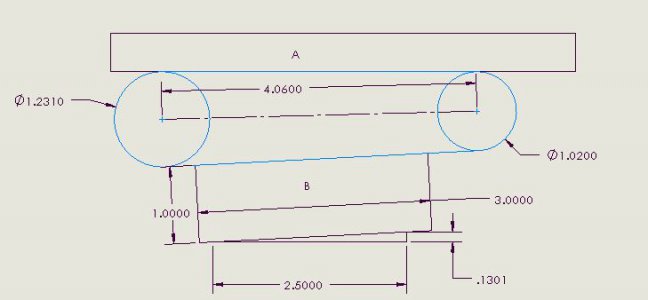- Joined
- Dec 18, 2019
- Messages
- 6,463
I suspect both MT4 adapters, sourced from eBay are not to spec. I get effectively 0 contact, save for at the spindle mouth. My finger smeared prussian blue isn't disturbed, save for at the very nose, and some incidental contact on the way out. @RJSakowski do you remember who you bought the adapter from? I can get an OEM MT4 dead center from Grizzly for $22.50. Won't have a carbide tip, but should be ok. I can buy a carbide tipped one from Grizzly, but am not sure if it would fit. Suppose I could ask Grizzly.
Interesting that my spindle bore is 26mm, (1.024") and RJ's measures out at 27mm (1.06").
How does one accurately measure the taper? Never done it. Found a ball bearing method for the socket, but it would cost me $24 to buy the balls, a 1-1/8 and a 1-3/16. Is there an easy way for the male taper? Answering my own question. Use 123 blocks and two dowels. Measure at 1" then at 2", difference is the taper. This would work if the base is flat. What if the base is of unknown flatness?
Interesting that my spindle bore is 26mm, (1.024") and RJ's measures out at 27mm (1.06").
How does one accurately measure the taper? Never done it. Found a ball bearing method for the socket, but it would cost me $24 to buy the balls, a 1-1/8 and a 1-3/16. Is there an easy way for the male taper? Answering my own question. Use 123 blocks and two dowels. Measure at 1" then at 2", difference is the taper. This would work if the base is flat. What if the base is of unknown flatness?


